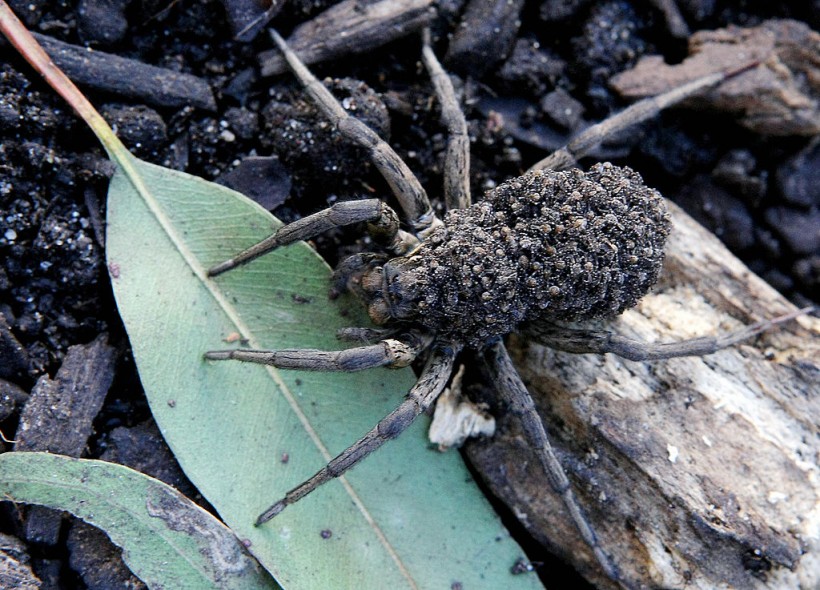Someone with arachnophobia has the fear of spiders. But even without that phobia, any ordinary person would be horrified to see a spider carrying dozens of its babies on her bulbous back.
One spider species called wolf spider does this, and a recent photo of one has made the rounds in social media. A widely shared Reddit post by the user u/tballey shows a picture of the brown and beige-striped spider they found while on a walk. Wolf spiders are the only spider species that carry their babies on their backs and will carry them until they are old enough to hunt.
The Unique Parental Care of Wolf Spiders
According to National Geographic, there are 250 species of wolf spiders in the US that ranges in size between 0.24 inches to 1.2 inches long. Wolf spiders hunt and kill their prey by injecting them with venom and digesting them from the inside out rather than weaving webs and waiting for their victims to get caught.
But perhaps they are best known for their parental care method that is unique to other spiders. Their way may have evolved to maximize the number of offspring that survive into adulthood compared to other spiders who do not have the same parental care.

A garden wolf spider (Lycosa) carries her brood of over 100 babies on her back for protection at Sydney Wildlife World on July 18, 2008. The baby spiders will stay on her back for 30-40 days before molting and moving off or staying and risk being cannibalised.
Honorary Secretary of the British Arachnological Society Geoff Oxford told Newsweek that female wolf spiders can carry their egg sacs around their backs when their young hatch out. Wolf spiders do not live in a web so they take their young with them, guarding and tending them.
Spiderlings would climb at their mother's back and are transported for a few days. Species that live in webs often protect their eggs in egg sacs made from silk, but wolf spiders would carry their young. Some would even make nurseries out of silk where their young could live until they are ready.
Some species would even take this devotion to the next level with the spiderlings eating their mother's body as a final act of parental care. The laceweb spiders are the best example of this; because when the mother dies, she is consumed by her offspring as an ultimate sacrifice.
A study shows that this so-called matriphagy increased the survival of the offspring and experienced a three-fold body mass increase on the day of the behavior.
READ ALSO: Mama Moose Chases Down a Hungry Grizzly Bear After Eating 1 of Her Newborn Calves [Watch]
Parental Care in the Animal Kingdom
Human parents typically care for their children from birth until they are old enough to be independent by providing them with food, shelter, love, and education. But parenting in the animal kingdom is quite complicated. Some would care for their young like humans, while others would simply release their gametes and hope for the best.
Per the article in Discover Wildlife, the levels of care by animal parents could be non-existent for some species that lay their eggs and leave them to fend for themselves, such as frogs and many insects, or they could also look for their young for many years, like the female orangutan who cares for her young for eight years.
Parental care could also vary on sexes in which the mother or father could be doing the parenting themselves alone. Animals like spiny seahorses, red foxes, and male midwife toads take paternal care seriously. Meanwhile, orcas, common cranes, and ladybird spiders are known for their maternal love for their offspring.
RELATED ARTICLE: Who's the Best Dad in the Animal Kingdom?
Check out more news and information on Spiders in Science Times.


![Earth's Quasi-Moon Kamo‘oalewa Could Originate From Lunar Surface Not Asteroid Belt [Study]](https://1721181113.rsc.cdn77.org/data/thumbs/full/53275/89/56/50/40/earths-quasi-moon-kamo-oalewa-could-originate-from-lunar-surface-not-asteroid-belt-study.png)











